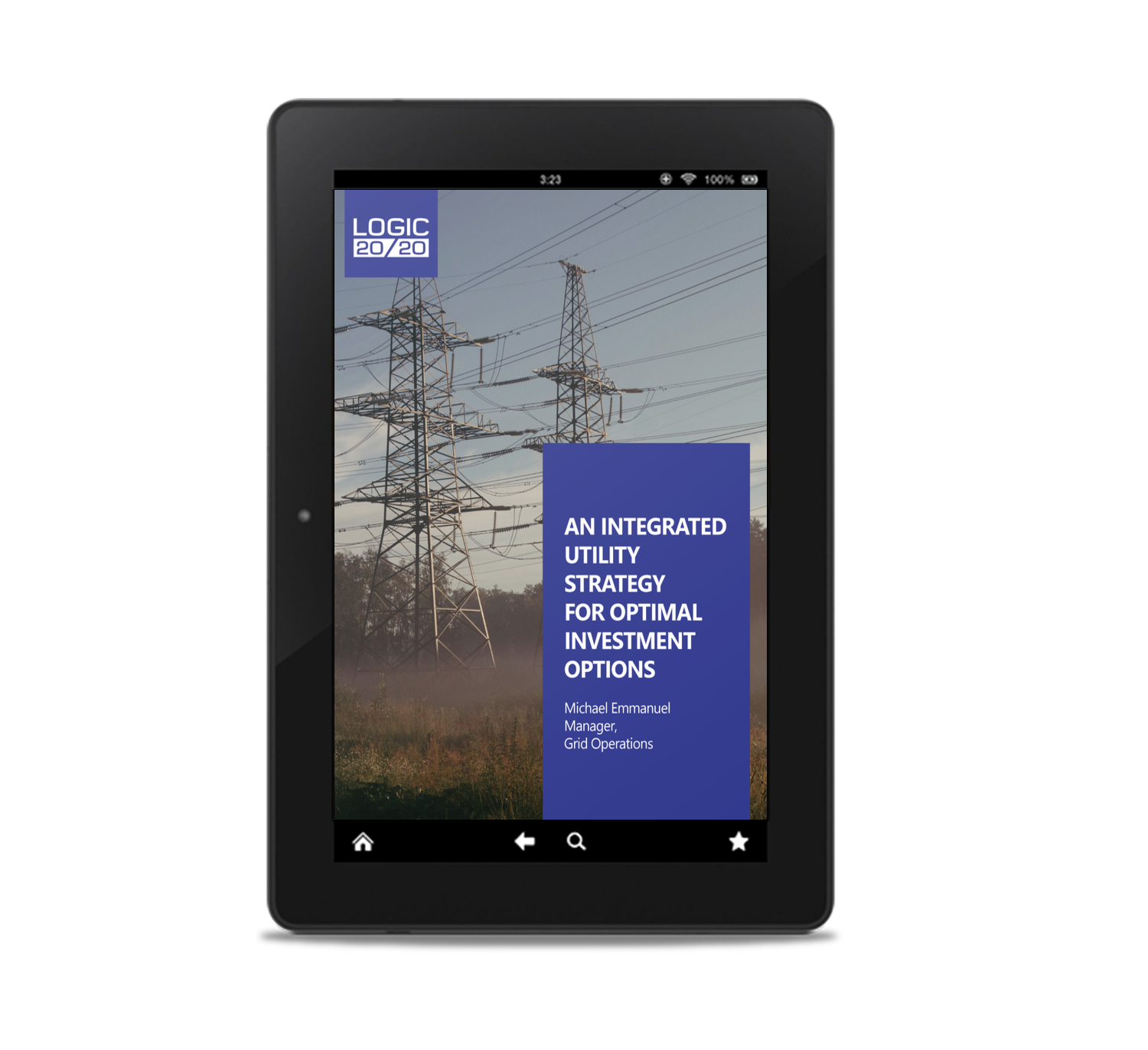An integrated utility strategy for optimal investment options
Faced with increasing renewable energy deployments, utilities and authorities having jurisdictions (AHJs) over the grid are addressing integration issues in several ways. These include investments in new initiatives, new regulatory regimes, revised interconnection standards, and technology solutions—or a combination of these pathways.
Download our white paper An Integrated Utility Strategy for Optimal Investment Options to learn
- Key aspects of an integrated utility strategy for optimal investment options
- An end-to-end framework for evaluating investment options
- How an integrated perspective across the value chain helps stakeholders make informed decisions on investment options
- And more

Excerpt from An integrated utility strategy for optimal investment options
Utility and government solutions
Utility and government initiatives can play a huge role in determining an optimal investment option or mix of options.
Process improvement
Utilities can embark on different business process improvement initiatives that can provide opportunities for cost saving, enhance customer experience, and improve operational efficiency while also enhancing grid reliability and resilience.
Technology and strategy solutions
Examples of technology- and strategy-related utility initiatives include early adoption of IT-enabled technologies such as smart meters before DER integration, increasing behind-the-meter (BTM) asset visibility, data integration strategies, digital transformation, change management strategies, innovation, and R&D initiatives.
Another question arises here: How should utilities objectively and optimally prioritize these initiatives, considering market and regulatory dynamics?
An initial step is to continue to engage with utility leadership for support and to narrow down to a few initiatives per time. Also, ordering initiatives by business needs, time-to-value, and dependencies such as regulatory and contractual requirements in an enterprise-grade solutioning can help utilities to continue to get ahead of the curve and maximize the benefits these initiatives.
External incentives
Several external initiatives from AHJs such as the Infrastructure Investment and Jobs Act (IIJA) and the Inflation Reduction Act (IRA) will have significant techno-economic impacts on utilities’ long- and short-term planning and operations. These grants provide an unprecedented breadth of opportunities and challenges because of the significant investments they are driving in distribution technologies, generation, and grid infrastructure.
For instance, IRA funding is expected to accelerate the integration of an additional 270 GW of solar and wind by 2030. This implies that previously financially nonviable projects could become economically viable. The rhetorical question here is whether the grid infrastructure will be able to accommodate such a high amount of variable renewable energy integration. For its part, IIJA will eventually spur grid infrastructure upgrades, giving more headroom for greater grid capacity and resiliency.
In our view, every utility is facing the unique challenge of how to tactically manage their internal strategy and priorities coupled with external initiatives while maintaining safe, reliable, resilient, and affordable grid operations. Continuously assessing the strategic impact and prioritizing and identifying the most impactful initiatives—or combination of initiatives—to pursue are now pivotal requirements for maximizing benefits both for utilities and customers.
Ready to learn more? Download An integrated utility strategy for optimal investment options today.
Why integrated utility strategies for optimal investment decisions matter
As the energy sector faces transformative pressures, utility executives need comprehensive strategies to navigate these challenges effectively. The insights in this white paper address critical issues central to the future of grid management and investment optimization:
Accommodating renewable energy growth
With increasing deployments of distributed energy resources (DERs), utilities face grid constraints like capacity and voltage violations. Identifying “sweet spots” for DER integration and evaluating deployment scenarios can yield significant techno-economic benefits, such as deferred upgrades and enhanced hosting capacity.
Optimizing investments in hybrid technologies
Combining technologies like solar and energy storage systems or wind and solar integration can enhance grid reliability and resilience. This white paper explores strategies for leveraging hybrid systems to reduce costs and increase grid capacity.
Aligning with regulatory and market dynamics
Legislative incentives, such as the Inflation Reduction Act, are accelerating renewable energy projects. This white paper provides frameworks to help utilities balance compliance with maximizing benefits from regulatory changes.
Ensuring an integrated approach to planning
Effective investment strategies require end-to-end frameworks that integrate demand and supply analysis, capacity planning, and system modeling. The white paper outlines how utilities can evaluate investment pathways holistically to ensure both operational efficiency and cost-effectiveness.
By addressing these priorities, the white paper equips utility executives with actionable strategies to develop integrated investment plans that ensure safe, reliable, and sustainable grid operations.

